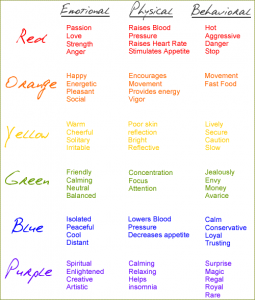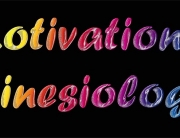We use colour to describe moods, emotions, feelings, etc. People see red, have black moods, feel blue, have green fingers, to name a few. We are all affected in some way by colour. Interior decorators use colour to create or set the tone of a room. Advertising manipulates the affect of colour to “assist” us to buy products. Colour sensitivity can affect us in many different ways. This correction can assist to defuse stress relating to particular colours.
Colour therapy has been used throughout history for health & healing.
- Red has been used to stimulate & can either excite or tire some.
- Blue sedates & can indicate hypoglycaemia & sugar problems as well as addictions.
- Pink calms violent behaviour & disturbs the hydrochloric acid balance leading to indigestion.
- Scarlet assists asthma.
- Rusty Gold has helped reduce the malignant effects of cancer.
Hyperactive children benefit from wearing neutral colours & avoiding colourful surroundings.
Colour sensitivities & the associated symptoms are a result of emotional imbalances in the posterior region of the limbic section of the brain (inner edge of the brain). Hormonal imbalances are a side effect of these emotional imbalances, via the connection of the limbic system & the pineal gland.
Using the Motivational Kinesiology corrections we can identify & suggest improvements to overcome any related symptoms.
Sunlight
Sunlight contains the full spectrum of light & is well known for its positive health benefits. Wearing glasses, poor lighting, computers, TVs, lack of time in sunlight, can all contribute to reduced health. Cancer patients in Europe have shown improvements with sensible exposure to sunlight. Vaginal infections benefited from exposure to sunlight. Dr. Zane Kime, in his book, “Sunlight Could Save Your Life” explains the effect of sunlight on blood sugar.
“The effect of sunlight on the body’s sugar metabolism parallels that of insulism. Sunlight facilitates the absorption of glucose in the cells of the body & stimulates the body to convert its blood sugar (glucose) into stored sugar (glycogen)… Sunlight removes the sugar in the blood by increasing glycogen levels. When diabetics were exposed to sunlight treatments, their blood sugar dropped & the sugar in their urine decreased or disappeared entirely…. Natural sunlight appears to provide the best results. Remember, when it comes to sunlight, moderation is the key.”
Jacob Liberman, in his book, “Light. Medicine of the Future“, describes the physiological effects of sunbathing versus physical exercise.
“Gradual & consistent exposure to sunlight or a gradual & consistent programme of exercise yields:
- 1. decreased resting heart beat.
- 2. decreased blood pressure.
- 3. decreased respiratory rate.
- 4. decreased blood sugar.
- 5. decreased lactic acid in blood following exercise.
- 6. increased energy, strength & endurance.
- 7. increased tolerance to stress
- 8. increased ability of blood to absorb & carry oxygen
Recently came upon this useful information on colour.







Leave A Comment
You must be logged in to post a comment.